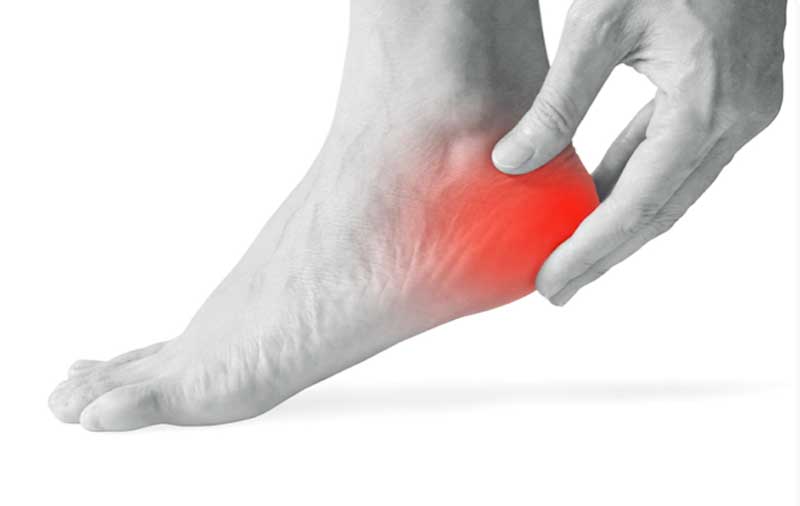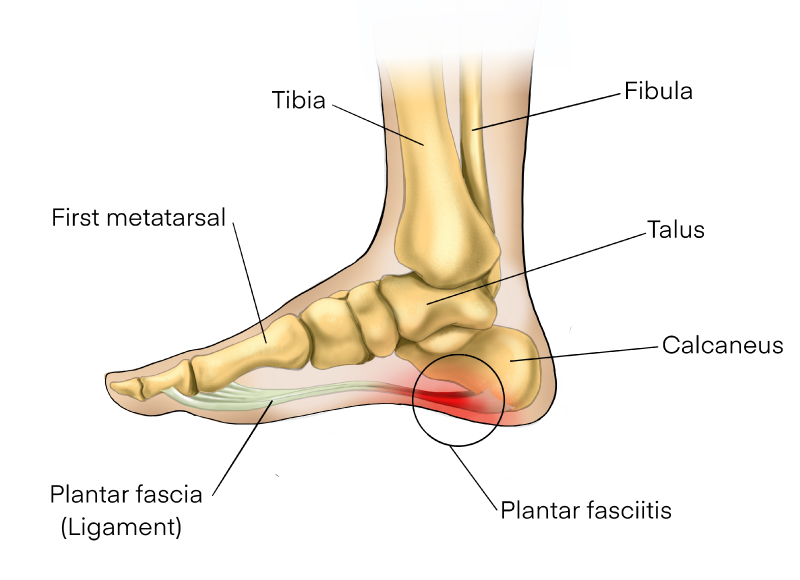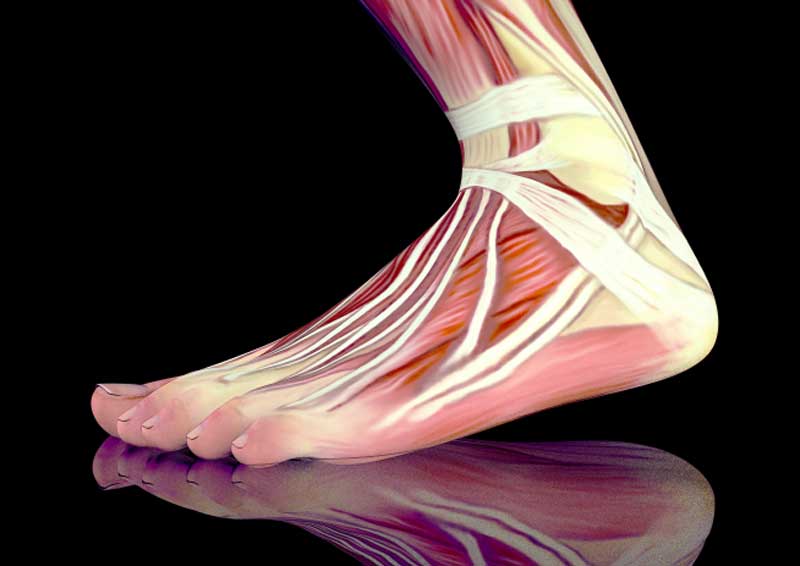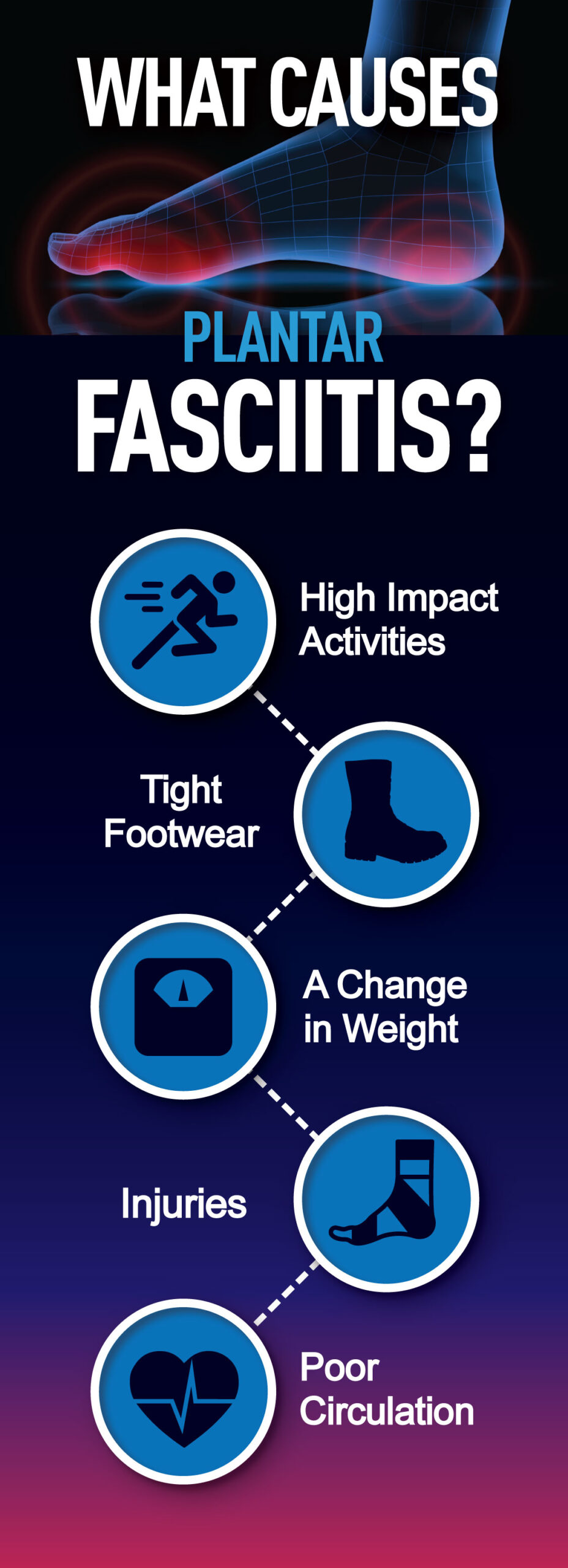Top 5 Facts for Veterans with a Flat Feet VA Disability Claim
Flat feet VA disability issues are more prevalent than most people think. Plantar fasciitis symptoms are some of the top orthopedic complaints among Veterans. According to WebMD, Plantar fasciitis symptoms are defined as “…a painful condition caused by inflammation of the bands of tissue that connect your heel to your toes.”
The thick, fibrous band that moves the digits of your foot, called the fascia, can become inflamed, causing swelling and pain on the bottom of the foot and sometimes even into the toes.
Some Veterans may experience plantar fasciitis symptoms in both feet simultaneously or just one foot at a time. If the disability occurs in both feet, there is a bilateral factor, which entails a higher VA rating.
What Causes Plantar Fasciitis Symptoms?

Wondering what causes your plantar fasciitis symptoms? Sometimes the cause is unknown, but there are a few common culprits that can be the ignitor of the inflammation in your fascia.
The Mayo Clinic says, “If tension and stress on that bowstring become too great, small tears can arise in the fascia. Repetitive stretching and tearing can cause the fascia to become irritated or inflamed..”
Before we get into typical plantar fasciitis symptoms, let’s take a look at some probable causes of the painful diagnosis.
High-Impact Activities
If you participate in high-impact activities that involve running or jumping, such as pick-up basketball, jogging or tennis, this may trigger plantar fasciitis.
The ruck marches that are required for most specialized training schools, the physical fitness tests once a quarter, and the typical runs that come with being a service member would all be considered high impact.
Whether you engage in high-impact activities irregularly or frequently, even one high-impact activity is enough to cause a small tear in the tendon located in the bottom of your foot, resulting in pain and inflammation.
Tight Footwear
Wearing uncomfortable boots or sneakers that are a size too small or too large may be the culprit of your plantar fasciitis.
It is important to wear shoes that fit correctly. Cramped toes and and heels can easily become sore and inflamed and the pain lasts long after you remove your ill-fitting footwear.
Shoes that are too loose can bump and rub on the sensitive soles and digits of the foot while walking or running, causing unnecessary stress and tissue damage.

A Change in Weight
Aside from the obvious weight gain that comes with armor plates, weapons and equipment, there are a variety of reasons why a Veteran may see a jump in the number on the scale.
Whether it is a side effect of a new medication, coping with PTSD, a traumatic or stressful life event or simply indulging a little too much over the holidays.
Regardless, weight gain can cause increased load and pressure on the body, including in the heel, resulting in plantar fasciitis symptoms.
Injury

It is common when we injure one side of the body, that compensate with the opposite side. For example, if you injure your left hand and are unable to use it, you’ll inevitably use your right hand much more than usual. The same goes for your foot.
If you have an injury in one foot, an increase in use and load will be put on the opposite, potentially creating stress and inflammation in the foot that can inevitably lead to being rated for a flat feet VA disability.
Poor Circulation

Circulatory capacity is often diminished as we age, resulting in the pooling of blood and fluid. Older Veterans may notice swelling in the limbs, particularly in the feet, due to decreased circulation.
The lowered blood flow to the feet can cause irritation in the fascia and individuals may notice pain after activities such as walking or stretching.
The above are some of the most common causes of plantar fasciitis and any of them may have been experienced in your military service.
There are also other factors that could contribute to uncomfortable inflammation in the foot; you’re a Veteran looking to file a VA claim with questions about flat feet VA disability, it is important to understand the history of your complaint and the potential origin of your ongoing plantar fasciitis.
Symptoms for Veterans with Flat Feet VA Disability Claim

Circulatory capacity is often diminished as we age, resulting in the pooling of blood and fluid. Older Veterans may notice swelling in the limbs, particularly in the feet, due to decreased circulation.
The lowered blood flow to the feet can cause irritation in the fascia and individuals may notice pain after activities such as walking or stretching.
The above are some of the most common causes of plantar fasciitis and any of them may have been experienced in your military service.
There are also other factors that could contribute to uncomfortable inflammation in the foot; you’re a Veteran looking to file a VA claim, it is important to understand the history of your complaint and the potential origin of your ongoing plantar fasciitis.
Depending on the severity of your diagnosis, your plantar fasciitis symptoms may vary from day to day, or foot to foot.
They may become more intense depending on the activities of your day or the weather outside. For example, cooler weather can often increase tightness in our muscles, which can result in a flare up in plantar fasciitis symptoms during the winter months.
Also, sometimes a low-quality orthopedic insert may contribute to more Veterans having a flat feet VA disability.
Pain in the arch of the foot or bottom of the heel
A telltale sign of plantar fasciitis is pain in the foot, mainly on the bottom of the foot, right in the arch, or in the heel of the foot.
Since the fascia is a large tendon on the bottom of the foot, tears and strain on the tendon can cause pain when walking or moving your toes. For many Veterans, the tissue in the foot can become damaged, uncomfortable and tender to the touch.
A Tight Achilles Tendon
Sometimes you may get a flat feet VA disability due to an original diagnosis of achilles tendonitis. The achilles is a band of tissue that connects calf muscles at the back of the lower leg to your heel bone.
If the tendon is overused or injured, it can become sore and achy. Left untreated, the inflammation and spread to the fascia, resulting in plantar fasciitis. So, if you have a tight achilles, that may be an initial plantar fasciitis symptom.

Pain that is worse in the morning
One of the most common complaints of Veterans living with a flat feet VA disability includes intense heel pain accompanying the first steps when getting out of bed in the morning.
This is due to the tightening of the fascia muscle that occurs during the night. When weight is put on the foot in the morning, the tight muscle is stressed causing pain. To find some relief, massaging and stretching the foot before stepping out of bed can be helpful.
Heel is swollen
A swollen heel may occur in severe cases of plantar fasciitis. If you notice that you are having trouble putting on shoes that used to fit, or the heel pain is too intense to wear tennis shoes on your walk, this can be a plantar fasciitis symptom.
Continue to speak with your doctor to get your pain uncontrol, in the meantime, ice and over-the-counter pain relievers can reduce the swelling in your heel.
Increased pain after exercising
Staying active is critical to maintaining mobility and independence as we age. Though, it may be difficult to continue your daily exercising while experiencing symptoms from having a flat feet VA disability.
If you notice pain and soreness in the bottom of your feet after going on a stroll with your grandkids or playing tennis with a friend, you may have plantar fasciitis.
Take it easy for a few weeks and see if you symptoms subside. If your pain does not subside or comes back with increased activity, you may need to visit a podiatrist.
Filing Your Plantar Fasciitis Claim For VA Benefits
To have a VA claim successfully awarded, you’ll need to get a diagnosis by a doctor of your choice. To proceed with a claim for your plantar fasciitis diagnosis, it is necessary to have the following things in order:
- Plantar fasciitis diagnosis
- In-service stressors for service-connection
- Medical evidence of symptoms
- Medical Nexus letter (recommended)
- The statement in Support of a Claim for Plantar Fasciitis
- Buddy Letter (recommended)
The VA Disability Ratings for a Flat Feet VA Disability

The VA will assign your plantar fasciitis a rating of 0 percent, 10 percent, 20 percent, 30 percent, and 50 percent. The expectations for each rating is broken down as follows:
| VA Disability Rating | Symptoms |
|---|---|
| 0 percent | …is warranted for mild pes planus with symptoms relieved by built-up shoe or arch support. |
| 10 percent | …is warranted for moderate pes planus where the weight-bearing lines are over or medial to the great toe, there is inward bowing of the tendo achilles, and there is pain on manipulation and use of the feet, bilateral or unilateral. |
| 20 percent | …is warranted for severe unilateral pes planus manifested by objective evidence of marked deformity (pronation, abduction, etc.), accentuated pain on manipulation and use of the foot, indications of swelling on use of the foot, and characteristic callosities. |
| 30 percent | …is given for serious pain and tenderness on the sole where you can only walk on the inside of the foot. There are spasms present when the achilles tendon is touched. Symptoms are not relieved with orthotic insert support in the shoe. |
| 50 percent | …is warranted if the symptoms for severe in the 30 percent rating as stated above are bilateral and occurring in both feet. |
In Conclusion

Living with plantar fasciitis symptoms can be uncomfortable and even begin to impact your quality of life if you’re not able to continue doing activities you enjoy due to the diagnosis. Though your flat feet VA disability issues can flare up for a variety of reasons, many Veterans link the origin of their plantar fasciitis to their time spent in the military. If you intend to file a VA claim for your plantar fasciitis, it is important to have your ducks in a row and be informed on the five ratings your diagnosis may be assigned by the VA.
About the Author

With over five years of experience in the healthcare industry, Morgan Redding has witnessed how access to quality care can significantly impact someone’s life for the better. Using her writing and research skills, Morgan deciphers medical jargon and healthcare data and puts it into layman’s terms. As a contributor to VA Claims Insider, Morgan hopes to empower Veterans with the clear information they need to navigate a complex system and ultimately get the support they deserve.

